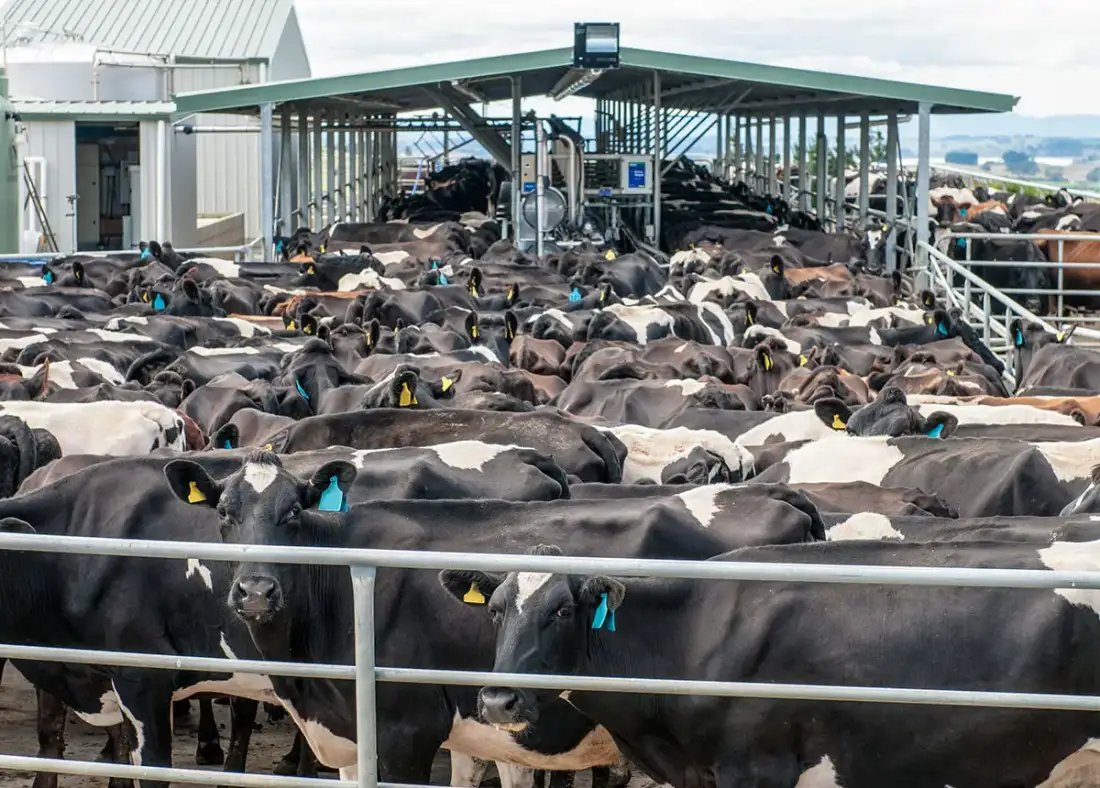This guidance provides dairy farmers with resources and tools to help improve energy efficiency on their farms.
By understanding where energy is used and making targeted changes — such as adopting solar power, optimising milk cooling, and upgrading equipment — farmers can lower operating costs, extend the life of machinery, and reduce emissions. The aim is to support the dairy sector in building more sustainable, resilient, and cost-effective operations through practical, on-farm energy-saving solutions.
Energy saving tips and resources for farmers
EECA worked with DairyNZ to support farmers in improving energy efficiency on-farm and identifying the best opportunities to use renewable energy. The resources available have been developed with farmers in mind and are designed to help lower costs, increase resilience, extend equipment life, and reduce emissions. By making smart energy choices, farms can strengthen their environmental performance and stay a step ahead of compliance and regulation.
Assessing on-farm energy use
Energy efficiency is the cheapest fuel available, and reducing demand through smarter practices can deliver quick wins.
By reviewing how energy is used across the farm — from milk cooling and water heating to irrigation and pumping — farmers can identify where the biggest savings lie. Taking the first steps towards efficiency not only lowers costs but also builds long-term resilience and sustainability.
The benefits of energy efficient farming
Energy reliability and financial barriers such as the up-front cost of investment, return on investment and uncertainty around appropriate technologies can be a focus for farmers looking to make the best energy investment decisions. It’s important to keep in mind that energy is a direct cost, so it makes financial sense for farmers to consider energy demand and efficiency and the flow on impacts.
- Energy efficient farms can use up to five times less energy per kilo of milk solid produced.
- Improving energy efficiency can help prolong the lifespan of equipment and reduce overall energy consumption.
- Integrating energy efficiency options into long-term farm planning will help ensure the plant operations can work together, provide opportunities for heat recovery, and mean potential savings are optimised.
- Finding efficiencies can also open new ways to improve resilience through smartly integrating new renewables/electric power investments with networks.
What it takes to get started
Energy is important for agricultural production with electricity and diesel the primary energy source on New Zealand farms.
To become more efficient, you first need to understand how you currently use energy, how to measure it, and explore ways to optimise how equipment is used to reduce energy consumption.
These resources have been created to give farmers a guide to the top energy saving opportunities, and how to get started.
Top three actions
- Look for quick wins.
- Plan ahead for plant renewals and major investments.
- Check your day-to-day operation efficiencies.
Read next
-
Solar on farms
Information, tools and support to help farmers install solar panels on farms in New Zealand.
- Innovation
- Solar energy
-
From sunlight to savings
A 54 kw solar PV system is paying off for this Wairarapa dairy farm.
- Case study
- Solar energy
-
Targeted spraying with drone technology
How an electric drone sprayer has helped Felton Road Wines reduce its diesel use and transform its vineyard management.
- Case study
- Innovation
- Solar energy



